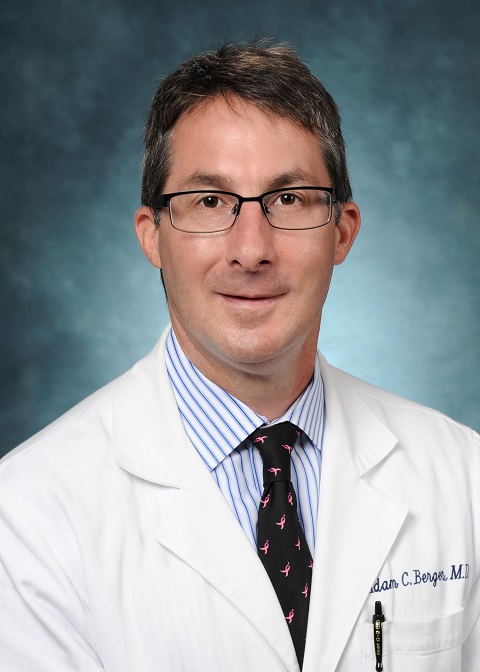Our patients have the benefit of advanced treatment options, clinical trials and greater access to expert care.

“Over the years, there’s been a revolution in the way we treat skin cancers, especially melanoma,” says Sarah Weiss, MD, Director, Melanoma/Cutaneous Oncology Program at Rutgers Cancer Institute of New Jersey, the state’s only NCI-Designated Comprehensive Cancer Center. “The important thing to know is that with skin cancer, even if it’s advanced, there are now a number of potentially effective therapies available.”
“A diagnosis of skin cancer can be scary,” says Adam Berger, MD, FACS, Chief, Melanoma and Soft Tissue Surgical Oncology at Rutgers Cancer Institute, “but when you’re treated by a multidisciplinary team, the chances of a good outcome are excellent.”
Advanced Treatments

Although melanoma accounts for only 1 percent of skin cancers, it causes the majority of skin cancer deaths. “Physicians at Rutgers Cancer Institute and RWJBarnabas Health treat all types of skin cancers, but we worry about melanoma because it has the highest chance of spreading in the body,” says Dr. Weiss.
“The majority of patients we see will have surgery to remove the melanoma, and that will be the only treatment they’ll need,” explains Dr. Berger. However, if a lymph node biopsy reveals that the cancer has spread, systemic treatment may be given. This may include targeted therapy or immunotherapy.
“The FDA has approved many new therapies over the past 10 years, including several new ones just this year, that enable us to harness a patient’s immune system to fight melanoma as well as other skin cancers,” says Dr. Weiss.
Patients may be eligible for one of a number of clinical trials available at Rutgers Cancer Institute or one of the RWJBarnabas Health (RWJBH) hospitals. “Our goal is to offer clinical trials in every setting of the disease, for patients who’ve never had treatment to patients who’ve had prior treatments but are in need of new therapies,” says Dr. Weiss.
Many Minds

MAcM, MMM, FACS
Multidisciplinary care means that patients at RWJBH hospitals and Rutgers Cancer Institute benefit from the expertise of a dedicated team of specialists, including surgical oncologists, radiation oncologists, medical oncologists, radiologists, dermatologists, pathologists, nurses, nurse navigators and social workers.
“We meet on a weekly basis to discuss each patient’s case,” says Dr. Berger. “We put our heads together to create a personalized plan of care for each individual.”
Physicians throughout Rutgers Cancer Institute and RWJBH coordinate care across the state at RWJBH hospitals. Their mission, says Dr. Berger, is to make top-level cutaneous oncology (skin cancer) care available for patients close to home.
Franz O. Smith, MD, MAcM, MMM, FACS, Northern Lead, Melanoma and Soft Tissue Oncology Program, RWJBarnabas Health, and Medical Director, The Melanoma Center at Cooperman Barnabas Medical Center, collaborates with the cutaneous oncology team at Rutgers Cancer Institute, attends the weekly multidisciplinary tumor board meetings and offers patients access to clinical trials. He also sees patients at Clara Maass Medical Center in Belleville.

The cutaneous oncology team at Rutgers Cancer Institute also works closely with surgical oncologist Victor Gall, MD, who treats melanoma and skin cancer patients at Community Medical Center in Toms River, Monmouth Medical Center in Long Branch and Monmouth Medical Center Southern Campus in Lakewood.
Melanoma: What to Know
Melanoma is a type of skin cancer that develops when melanocytes (the cells that give the skin its tan or brown color) start to grow out of control. It’s more likely than other skin cancers to spread to other parts of the body if not treated early.
“I advise patients to see a dermatologist for a skin check regularly, and if there’s any change in a mole, to be seen right away,” says Adam Berger, MD, FACS, Chief, Melanoma and Soft Tissue Surgical Oncology at Rutgers Cancer Institute.
The most important warning sign of melanoma is a new spot on the skin or a spot that is changing in size, shape or color. Be on the lookout for spots that have any of the following features:
A is for Asymmetry: One half of a mole or birthmark does not match the other.
B is for Border: The edges are irregular, ragged, notched or blurred.
C is for Color: The color is not the same all over and may include different shades of brown or black, or sometimes patches of pink, red, white or blue.
D is for Diameter: The spot is larger than 6 millimeters across (about ¼ inch—the size of a pencil eraser), although melanomas can sometimes be smaller than this.
E is for Evolving: The mole is changing in size, shape or color.
To learn more about treatment for skin cancers at RWJBarnabas Health and Rutgers Cancer Institute of New Jersey, call 844-CANCERNJ, or 844-226-2376.
